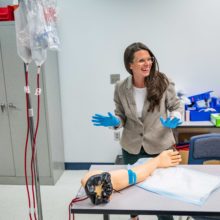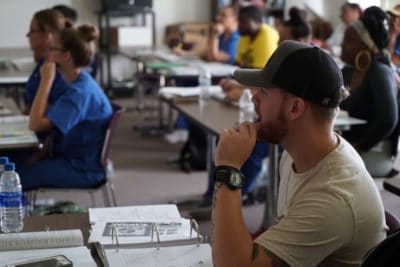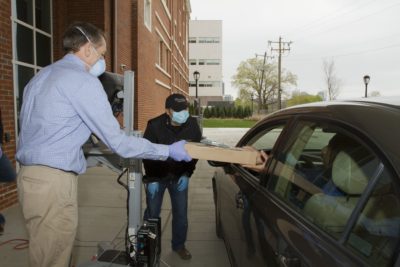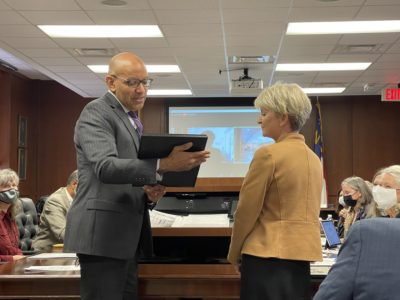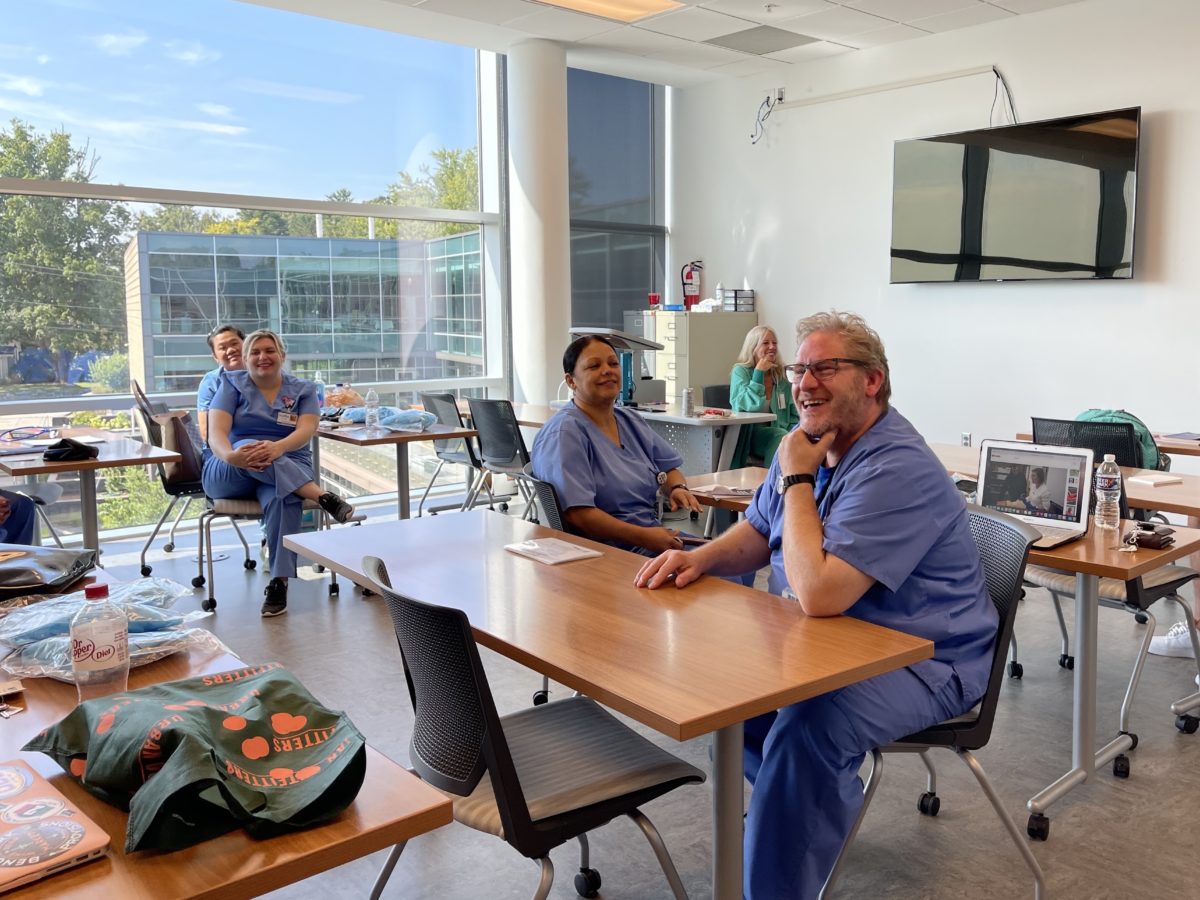
|
|
After the pandemic caused widespread enrollment declines at community colleges both nationally and in North Carolina, preliminary numbers from fall 2021 show a slight uptick in enrollment in North Carolina’s community colleges. Initial full-time student equivalent (FTE) estimates, which are based on the number of accumulated student hours, are up about 1% systemwide.
North Carolina Community College System (NCCCS) president Thomas Stith said smaller colleges were seeing the greatest share of enrollment increases in his October report to the State Board of Community Colleges.
“Almost three-fourths of the small colleges have increases. Over a third have increases of 10% or higher. Almost tw0-thirds of our large colleges have increases. And about a quarter of our medium [sized] colleges have increases.”
Thomas Stith, NCCCS president
The increase across the board is not surprising. Some community colleges have reported gains upwards of 20%, with one college, Roanoke-Chowan, reporting an enrollment increase of 53% from fall 2020 to fall 2021. Despite these large gains at some colleges, enrollment across the system has not recovered from pandemic losses, mirroring what community colleges are experiencing nationally.
Recent National Student Clearinghouse data shows there are 1 million fewer students enrolled in colleges and universities than before the start of the pandemic. Across the country, community college enrollment has dropped 13% since 2019.
Leaders at North Carolina’s community colleges point to several reasons why enrollment hasn’t fully bounced back.
Where are the students?
An economic downturn almost always spells enrollment booms for community colleges. But the last few years have not followed normal economic patterns. After a steep increase at the start of the pandemic, unemployment rates are back down to 3.9% as of Nov. 2021.
At the same time, businesses struggling to find workers have increased wages. The average hourly earnings for nonsupervisory jobs in the labor market increased anywhere from 2% to 15% in just one year.
High school students who started working after schools went remote in spring 2020 have gotten accustomed to working 15 to 20 hours. Now earning $15 an hour in many places, it’s been hard to convince them to enroll in college, said Wesley Beddard, president of Martin Community College.
And for those students who have enrolled, some have opted to take fewer classes.
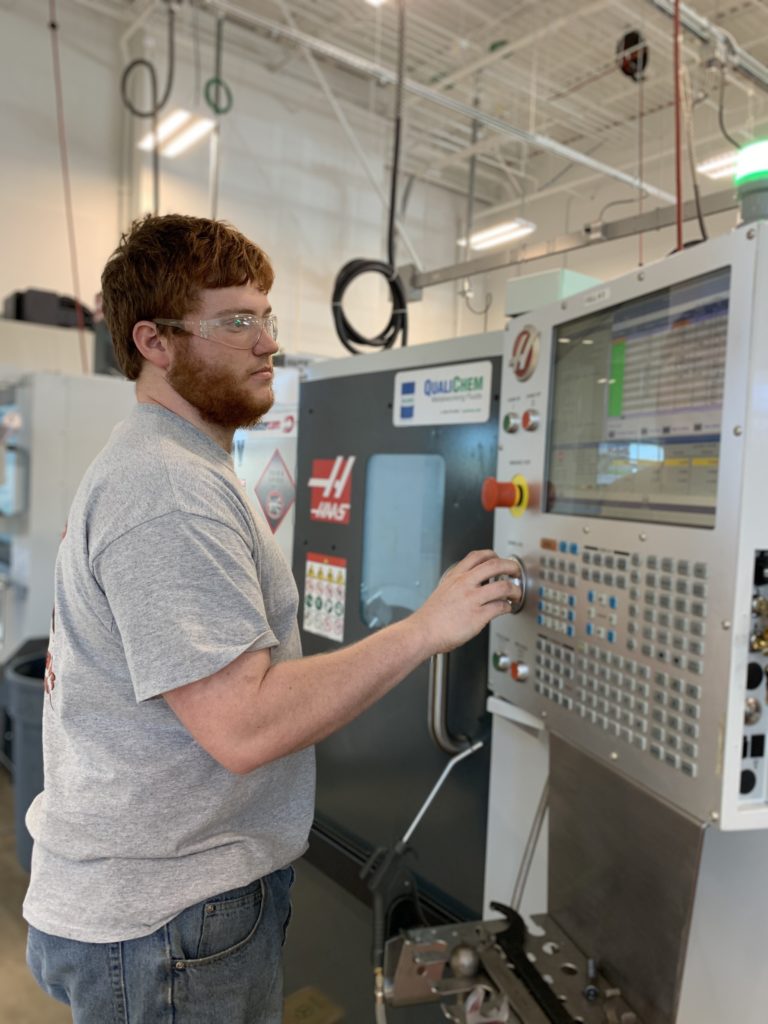
Dr. Margaret Annunziata, president of Isothermal Community College, said that while students are still engaging, they are not engaging at pre-pandemic levels.
“There seems to be a general malaise related to COVID-19 hanging over our communities that has affected our students’ willingness to engage in what we would consider the pre-pandemic norm,” Annunziata said.
Isothermal was one of only four colleges in fall 2020 to see enrollment increases. In fall 2021, the college’s total headcount was up, but FTE estimates were down, meaning that while more students were showing up, they were taking fewer classes overall. FTE is one of the biggest factors in determining state funding for community colleges. Lower FTE means a decrease in funding.
Declining high school student enrollment
Some colleges have also experienced significant enrollment declines from a single population: high school students.
Through Career and College Promise (CCP), qualified high school students can take college courses tuition-free. Community colleges often work closely with their local high schools to advise and enroll students in CCP courses.
Martin Community College suffered a 24% decline in CCP enrollment this fall. Beddard said a few factors contributed to this drop.
At the end of the 2021 school year, COVID numbers were falling and a return to a normal school year seemed within reach, said Beddard. But by July, cases had spiked and the high schools Martin Community College serves were not certain whether they would be in person in the fall.
“Some students just didn’t sign up for the online courses because they didn’t want to go through another year of that,” Beddard said.
In addition, after almost two years of a disrupted high school experience, some students were just not prepared to take a college class.
“Some students, but also the guidance counselors, told us that some of these students aren’t ready for college-level courses,” Beddard said. “A lot of them basically missed their sophomore year.”
Weather and population shifts impacting enrollment
Weather-related issues also impacted fall enrollment this year at Haywood Community College. Last August, Tropical Depression Fred dropped over a foot of rain, causing severe flooding in parts of western North Carolina.
Dr. Shelley White, president of Haywood Community College, said the college was closing in on their enrollment decline from fall 2020. But after Fred hit on the second day of the fall 2021 semester, student withdrawals and no-shows were inevitable.
Beyond a drop in high school enrollment, students taking fewer classes, weather events, and COVID fatigue, some colleges are experiencing lower enrollment simply because of declining populations in their service areas.
Bill Schneider, associate vice president of research and performance management at the system office, said that enrollment shifts at North Carolina community colleges have largely aligned with population shifts.
Counties with declining populations generally experience enrollment declines while counties with population growth tend to see enrollment growth.
According to a report Schneider shared during the December State Board meeting, 46 of the 58 colleges had FTE shifts that aligned with population shifts.
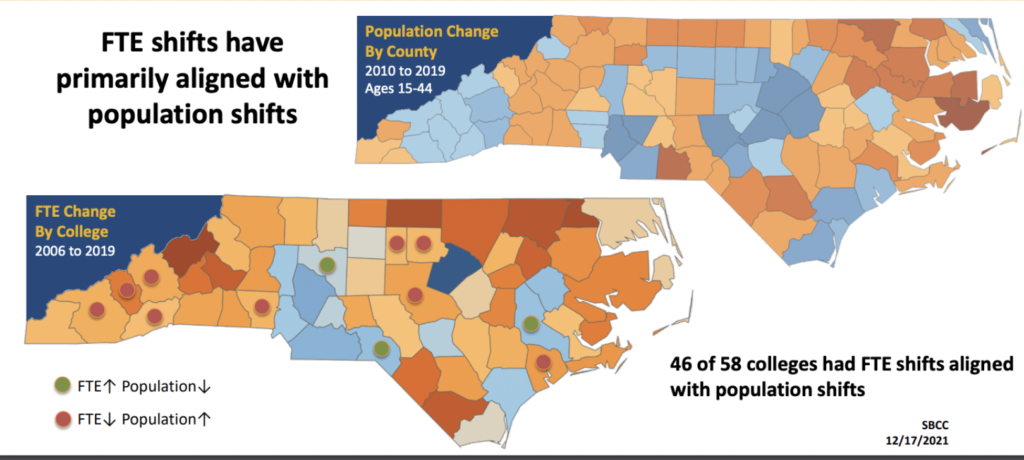
Schneider said if you look at population changes of those aged 0-14 and population by county of 15-44 year-olds, you can make the assumption that more rural schools will continue to see declining enrollments compared to urban schools.
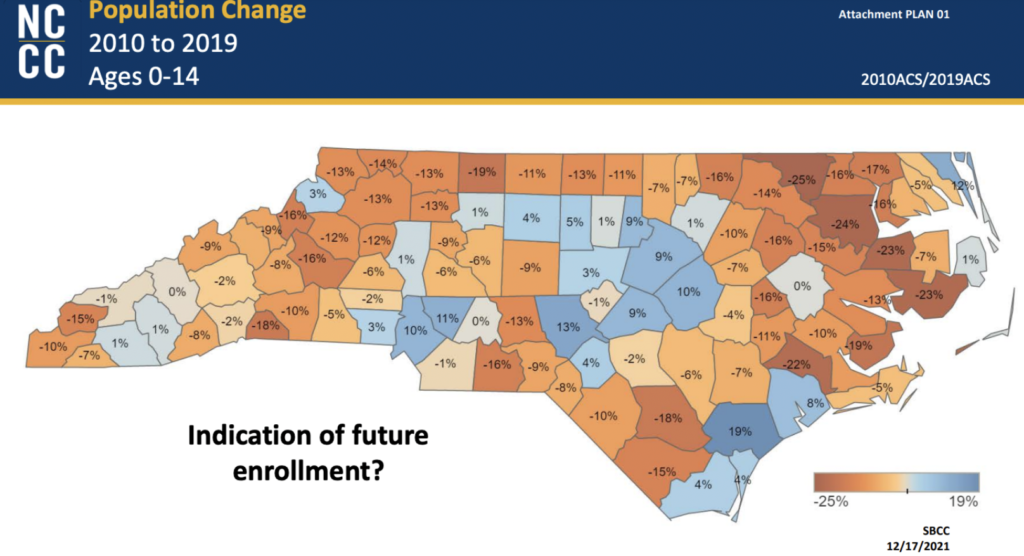
Bucking the trend: Some colleges offer free tuition
Not every community college saw enrollment declines in fall 2021, however.
Based on local reports, several community colleges bucked the national trend, with some colleges seeing increases of 20%. Roanoke-Chowan, a college that has previously experienced enrollment woes, saw an increase of 53% from last fall.
Many community college leaders attribute these enrollment bumps to free tuition.
Cost of living and cost of tuition are major concerns for individuals considering enrolling in college. Paying for college is one of the biggest barriers students face.
In May 2021, Gov. Roy Cooper announced a grant to help high school seniors from low-and middle-income families pay for tuition and most fees at any of the state’s 58 community colleges. The Longleaf Commitment grant was made available to 2020 and 2021 North Carolina high school graduates and guarantees that eligible students receive $700 to $2,800 per year for a total of two years.
“The Longleaf grant is huge for students in our county – to have that promise of education…I hope that it’s something that might go beyond these couple of years,” said Dr. Tracy Mancini, president of Carteret Community College.
In addition to the Longleaf Commitment, several community colleges in North Carolina guaranteed free tuition for all students, using a combination of federal, state, local, and philanthropic funding. In some instances, colleges also covered books and fees.
Administrators at Beaufort County Community College and Carteret Community College said providing free tuition directly impacted their enrollment numbers this fall. Beaufort saw a 25% increase from last fall, and Carteret’s enrollment was up just over 20%.
“One thing we learned this semester is that if we have the luxury of guaranteeing…that not one student will be turned away because they can’t afford education, that eases a lot of the public’s perception,” said Dr. Maggie Brown, vice president of instruction and student support at Carteret.
Brown said because of the financial resources given to the college, Carteret was able to make a promise to their community that any person who wanted an education or training would be able to access it.
At McDowell Technical Community College, fall 2021 enrollment jumped 17% over last fall. In a press release, the college credited free tuition as the primary reason for the double digit increase.
Martin Community College offered Career in a Year, an initiative that allowed students interested in workforce training programs to attend a year of college for free. Free tuition and fees were offered to students who enrolled in workforce training programs designed to be completed in one year that would lead to an entry-level job. While Martin experienced enrollment decline among its high school population, Beddard said Career in a Year helped the college increase its adult population.
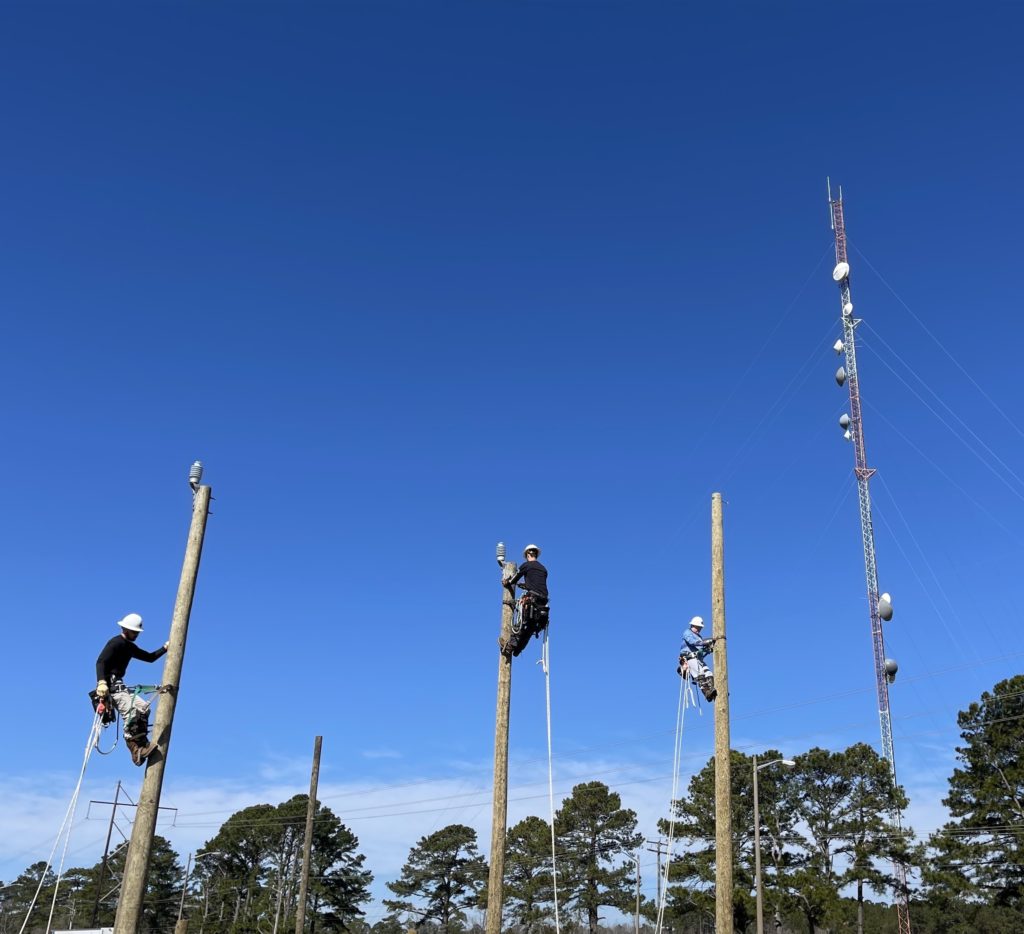
Targeted messaging
Other college leaders said that having a strategic plan around marketing and messaging was imperative to their success.
James Sprunt Community College has seen enrollment increases for the past two years. The college is up 12% from fall 2020 to fall 2021. When asked the reason for the continued increase, president Dr. Jay Carraway said he believes one reason is how intentional the college has been about recruiting and marketing.
“Anything that we do, we try to have a strategy about how to go about doing that and to recruit with a purpose,” Carraway said.
Forsyth Technical Community College also credits intentional messaging for helping drive student enrollment. In 2021, the college implemented a customer relationship management tool (CRM). The CRM allows the college to segment audiences and messages, making it easier to incorporate targeted outreach.
Like many regions, Forsyth’s service areas had a huge demand for paramedics. Using foundation dollars, the college offered a stipend for students to sign on to the program.
“We wanted to create an incentive to help encourage folks to come to this high-demand, high-wage, high-value career field,” Paula Dibley, vice president for strategy and outreach at Forsyth, said.
The college created two events with key speakers who discussed what it meant to be a paramedic. To get the message out, Forsyth used their CRM to target pre-health students who had not been admitted to a program, as well as short-term credential health students.
The events were a success – rooms filled and diverse crowds.
After targeted messaging and just two events, Forsyth Technical increased their paramedic enrollment by 70%.
Purposeful recruiting also includes knowing what communication tools work for your audience. President of Vance-Granville Community College, Dr. Rachel Desmarais, said that print and radio still work as recruiting tools in the college’s service areas.
It’s sometimes difficult to measure the success of general marketing campaigns. Often there are no names, faces, or connections to those who may receive a college’s communication.
One strategy, however, proved to be successful for several colleges engaged in a new pilot project aimed at reaching adult learners.
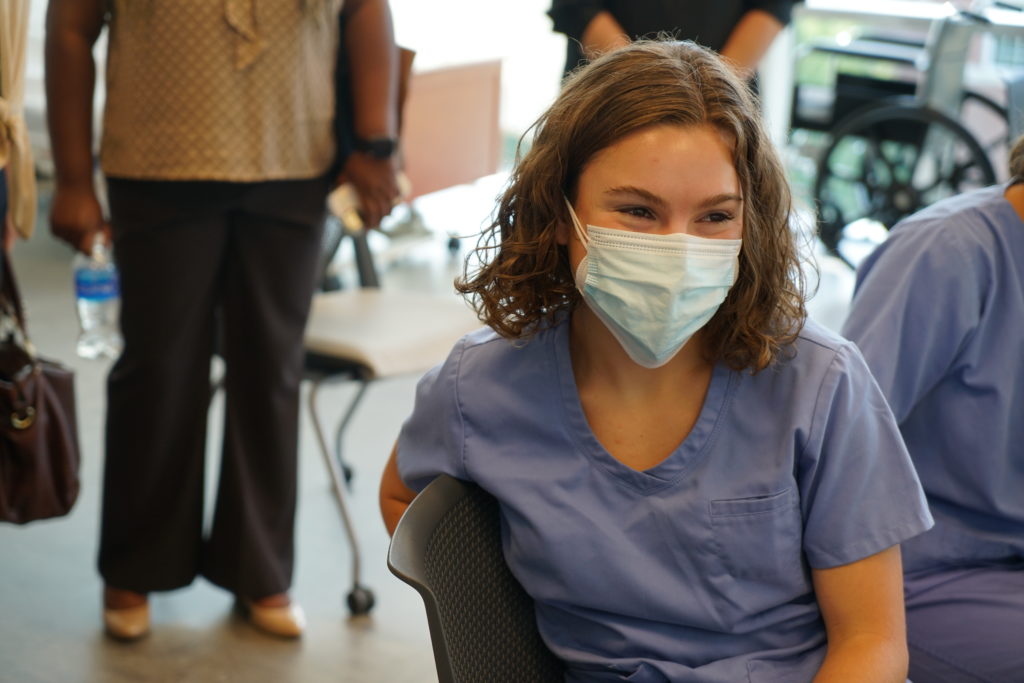
In June 2021, the John M Belk Endowment, myFutureNC, and the Belk Center for Community College Leadership and Research announced a pilot project and outreach campaign to engage and enroll adult learners.
N.C. Reconnect consisted of two major components: communicate broadly to adults about the opportunities at their local community college and reengage adult students who had previously attended and who had completed at least 50% of their coursework towards a credential.
Blue Ridge Community College was one of five colleges engaged in the pilot project. Their efforts paid off. Enrollment at Blue Ridge increased 9% in fall 2021 compared to fall 2020.
While strategic recruitment is important, some colleges are finding that in order to reverse declining enrollments, they have to change their operating models.
North Carolina community colleges educate students of various ages with different backgrounds and life experiences. As open door institutions, community colleges historically serve more diverse populations who have also traditionally been underserved.
Part of changing a college’s operating model is aligning supports to meet the diverse needs of the students who attend. That means more wrap-around services, including everything from help with transportation to child care, food, and clothing.
Many colleges are also offering courses in eight-week semesters, providing flexibility to students who may be parents or work full-time. A student who may have initially been overwhelmed with taking four or five classes in one 16-week semester can now take two or three classes in each eight-week semester. The result is a more manageable course load while still retaining full-time status.
Shortened semesters also provide more on-ramps for students seeking to enroll.
Retaining students
If half the battle is getting students in the door, the other half is keeping them enrolled.
When Laura Leatherwood, president of Blue Ridge Community College, started the adult learner pilot project, retention was at the top of her list. Leatherwood hired success coaches to help track and follow-up with students after they enrolled.
“We assigned 497 adult learners this fall to a success coach, and as of yesterday, I have a 95.18% persistence rate for the semester,” Leatherwood said during the December State Board meeting.
Pitt Community College, another adult learner pilot school, launched a center dedicated entirely to adult learners. Individuals in the center are trained to work with adult learners and assess the needs of the students who walk through the doors. The adult learners also receive mentorship from trained staff.
Other colleges are revamping their advising models to allow for a case-management approach. And some colleges are realizing that calling students, technology that has been around for 145 years, still has value.
“We found that more students than not pick-up the phone, and students who don’t pick-up often call us back very quickly once they hear the message,” Brown said.
Perhaps one of the greatest recruiting and retention tools is connection.
Faculty and staff connecting and building relationships with students can and does make a difference, students told us. When EdNC interviewed adult learners this past fall, one of the common themes we heard was the impact faculty and staff had on a student’s decision to enroll, return, or continue their coursework.
Where do North Carolina community colleges go from here
“Reversing the decade-long decline in community college enrollment is the highest priority for our system,” said Burr Sullivan, State Board Chair.
It’s a priority he says that will be reflected in the system’s 2022-2026 strategic plan. Sullivan went on to say that adult learner initiatives will be an important component in enrollment efforts moving forward.
Reversing declining enrollment is not just a benefit to colleges. It changes people’s lives and the landscape of communities.
Studies show that workers with education less than a high school diploma had the highest unemployment rates and the lowest weekly earnings. As education increases, so does earning potential. And earning a postsecondary credential has been linked to a host of benefits, like lower infant mortality rates, better health, and food and housing security.
“[Community colleges] are a pathway to something better. Let us show you that way. And…sometimes you have to show them there is a pathway, and you’re not just arbitrarily throwing classes at them.”
Dr. Jay Carraway, president of James Sprunt Community College
